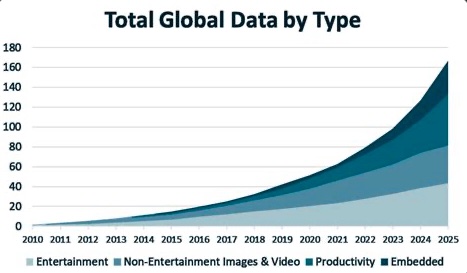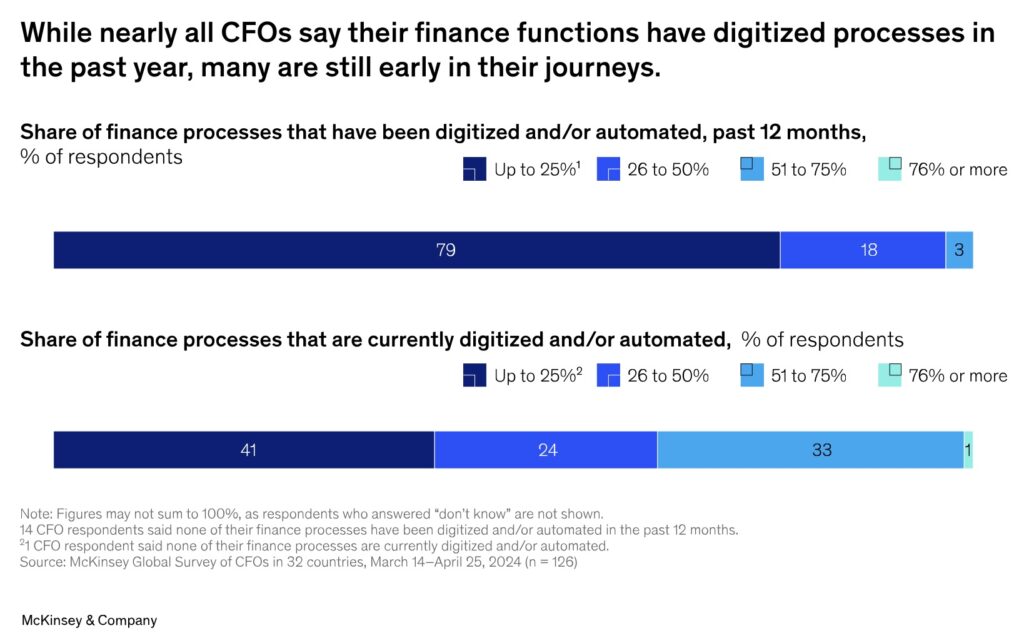
Data is exploding—and not metaphorically. According to a late 2024 report by Exploiding Topics, the world was expected to generate 181 zettabytes by the end of that year, up from 120 zettabytes in 20231. That’s 181 trillion gigabytes—most of it unstructured, unanalyzed, and unusable by default. The sheer scale of that number is hard to grasp, and for most businesses, even harder to use.
The differentiator isn’t access to AI. It’s knowing what to do with it, because having more data doesn’t automatically lead to better decisions. What separates savvy leaders from overwhelmed ones isn’t access to cutting-edge algorithms. It’s the ability to ask the right questions and embed AI into real, human-centered workflows.
In reality, AI is only as effective as the thinking around it.
The power of data isn’t unlocked by machine intelligence alone. It’s amplified when paired with human judgment and good questions. AI might serve up correlations, but people still have to turn those into meaningful action. Algorithms won’t define your company’s strategy. That’s our job.
Embedded AI, Evolving Skills
AI isn’t new. It’s been around since the 1950s. But what we’re experiencing now is a usability leap. Today, AI isn’t something you bolt on. It’s getting baked directly into tools people already use—like CRM platforms, ERP systems, and analytics dashboards. That’s part of the reason the skills businesses need are evolving fast.
In this wave, it’s not just about data scientists or ML engineers. What’s rising in value is the ability to ask the right business questions, interpret AI output intelligently, and integrate insights into real workflows. Analytical thinking, problem framing, domain knowledge—these are the new essential tools.
Tools That Fit Into the Flow
Here’s what I’m experiencing: two clear trends:
- AI is being embedded into existing platforms. It’s no longer “implement AI” as a standalone effort. Instead, it is about an ecosystem of tools, leveraging Salesforce with AI baked in, Snowflake with a semantic layer, and workflow automation tools like MS Power Automate or Parabola to manage finance workflows.
- New AI-native entrants are designing with adoption in mind. AI-first startups know that if the value isn’t obvious and easily digestible, it’s dead on arrival. Integration, not complexity, wins.
“85 percent of CFOs believe that creating insights that reduce manual analysis is the most valuable aspect AI will bring to their businesses in the next five years.” 2

That emphasis on insight—not just automation—is critical. It reflects the rising need for people who can think across disciplines: data-aware strategists, AI translators, and operations leaders who know how to weave AI into daily decisions.
The Opportunity – As I See It
As our tools become smarter and more embedded, those of us using them need to shift too. Expect to see:
- A rise in “translators”—analytical thinkers who can frame good questions.
- Process-focused innovators who bridge data and action.
- Cross-functional leaders who translate insight into execution.
This isn’t just a tech upgrade. It’s a strategic one. Leaders who thrive won’t be the ones with the flashiest AI demos. They’ll be the ones who know which questions to ask, how to connect insight to execution, and how to help their teams use AI as a lens—not a crutch.
Final thought: In a world generating 181 zettabytes of data, the winners won’t be the ones who know the most. They’ll be the ones who understand what actually matters. And that still starts with people. Us.
- Amount of Data Created Daily (2025); Exploiding Topics, https://explodingtopics.com/blog/data-generated-per-day?utm_source=chatgpt.com ↩︎
- McKinsey & Company, Toward the Long Term CFO: Perspectives on the Future of Finance, https://www.mckinsey.com/capabilities/strategy-and-corporate-finance/our-insights/toward-the-long-term-cfo-perspectives-on-the-future-of-finance ↩︎
